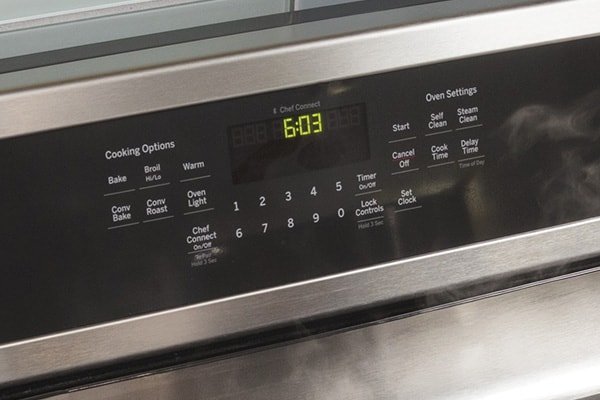
First things first, what does this E1 error code even mean? Simply put, it’s your oven’s way of saying, “Hey, something’s not quite right!” Often, this code indicates a communication issue within the oven’s components, much like when your phone drops a call. But fear not, for just as you can redial a number, you can reset your oven. Let’s dive into the nitty-gritty of how you can troubleshoot and resolve this pesky error, ensuring your appliance gets back to its prime performance.
Understanding Error Code E1 on GE Ovens
Before we jump into the solution, it’s essential to grasp what Error Code E1 signifies. In the realm of GE ovens and ranges, this error usually points to a communication breakdown between the control board and the touchpad. Imagine it like two teammates failing to pass the ball correctly. This glitch can halt your cooking plans and leave your oven in a non-responsive state.
Why does this happen, you might ask? Well, several factors could be at play. Over time, wear and tear can cause connections to loosen, much like an old pair of sneakers losing their grip. Furthermore, slight electrical glitches, power surges, or even moisture can interfere with the electronic components of your oven. When the control board and touchpad aren’t communicating, your oven can’t function properly, hence the E1 error.
But here’s the silver lining; resetting your oven can often clear this error. It’s akin to rebooting your computer when it freezes — a simple yet effective trick. Resetting your oven re-establishes the connection between its internal parts, much like a referee getting that basketball match back in order. Up next, let’s explore how you can perform this reset smoothly.
Step-by-Step Guide to Resetting Your GE Oven
Alright, let’s get into the action now. Resetting your GE oven after encountering the E1 error is straightforward if you follow these easy steps. Think of it as giving your appliance a fresh start, like hitting the refresh button on your browser when a page won’t load.
Firstly, ensure your oven is completely off. Locate the power source — this could mean unplugging it from the wall socket or switching off the circuit breaker dedicated to the oven. Wait for about five minutes. This brief pause allows the electronic components to fully discharge, clearing any temporary glitches. It’s the equivalent of letting your computer cool off before restarting it.
Once the time’s up, plug your oven back in or flip the circuit breaker back on. Power it up by turning on the main switch, and check the display. In many cases, the E1 error will have disappeared, and your oven should be ready to use. If it doesn’t, don’t panic — we’ll explore further troubleshooting steps next. But for most, this simple reset does the trick and restores normalcy, letting you get back to baking that lasagna.
What to Do If the Error Persists
If resetting doesn’t resolve the E1 error, there’s no need to throw in the towel just yet. Sometimes, your oven might need a bit more attention, much like a car needing more than just a jump-start to get rolling. Let’s explore some additional steps.
First, inspect the oven’s wiring connections. Carefully pull the oven out slightly (ensure it’s safe to do so), and check if any wires have come loose. Loose connections can be the culprit behind the E1 error, akin to a loose headphone jack causing poor audio. If you’re not comfortable doing this yourself, it might be wise to consult a professional, as dealing with electrical components can be risky.
Next up, consider the environment around your oven. Is it located in a humid area? Excessive moisture can lead to electrical problems. Ensuring proper ventilation can help mitigate this issue. Also, check if there are power fluctuations in your home. An unstable power supply can cause errors; perhaps, investing in a surge protector could prevent future occurrences.
If after all these attempts the E1 error still lingers, the control board or touchpad might be faulty. At this point, it might be best to reach out to GE’s official customer service or a certified technician. They can accurately diagnose the problem and provide a solution, ensuring your oven gets back to its former glory.
Prevention Tips to Avoid Future Errors
As the saying goes, prevention is better than cure. While errors might appear unavoidable, there are steps you can take to minimize their occurrence. It’s like taking your car for regular check-ups to avoid unexpected breakdowns. Here’s how you can keep your oven running like a well-oiled machine.
Regular maintenance is key. Clean your oven periodically, ensuring no food particles or grease build-up interferes with its operation. Think of it as an athlete maintaining their gear; a clean oven is a happy one. Moreover, avoid slamming the oven door shut. Though it seems trivial, forceful closures can loosen connections over time, leading to errors.
Monitor your home’s power supply. If you experience frequent power surges or cuts, consider investing in a voltage stabilizer. It’s like giving your oven a protective shield against erratic power levels.
Finally, when in doubt, consult your oven’s user manual. We’ve all been guilty of tossing away instruction booklets, but they contain valuable information on error codes and maintenance tips specific to your model. Keeping it handy can save you a lot of stress in the long run.
By following these tips, you can reduce the likelihood of encountering the E1 error again, ensuring your GE oven serves you well for years to come.